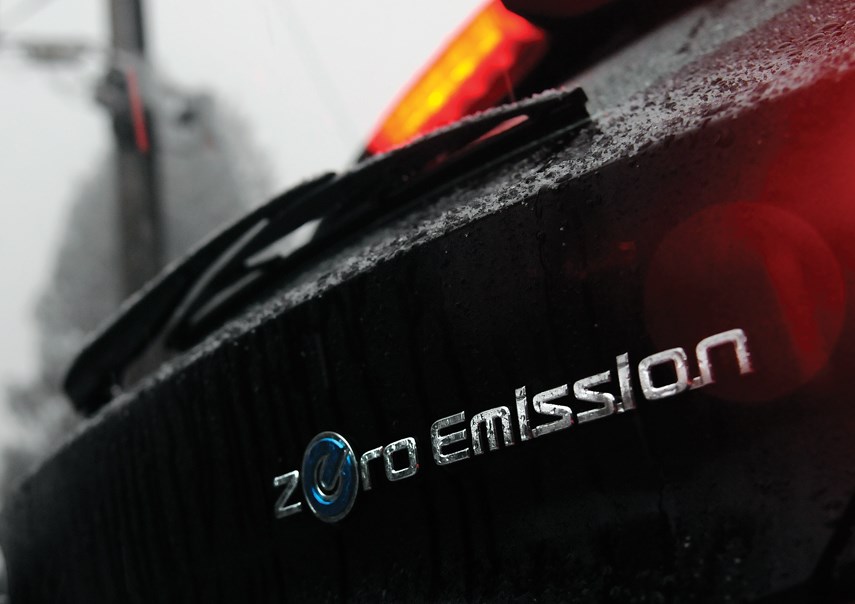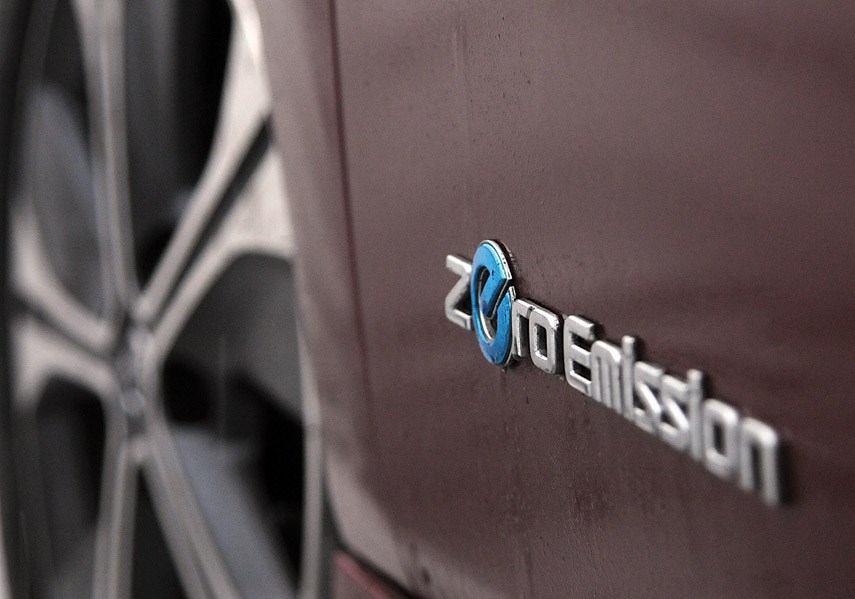As of last week, many EV proponents were joyous over Tesla’s announcement that the long-awaited entry-level Model 3 was finally here.
Well, not “here,” per se, but at least available for ordering rather than merely taking deposits. At a cost of US$35,000 before freight, tax, or incentives (or $47,600 in Canada), the standard-range Model 3 is fairly basic, but better late than never.
Compared to other U.S. automakers, Tesla has a market cap and stock valuation right alongside Ford or General Motors. You might, therefore, think that the best-selling electric vehicle is a Tesla of some sort. It’s not. In fact, the current record belongs to a relatively homely little four-wheeled dose of pragmatism that keeps soldiering on, avoiding headlines but making progress.
Introduced in 2009 at Nissan’s global headquarters, the Leaf represented more than a decade’s worth of prototyping and real-world testing. First came the Altra, a proof-of-concept based around a crossovery station wagon. Nissan built approximately 200 of these, and employed them in fleets for electrical companies and the like. It had a range of about 190 kilometres, but was not ready for private use.
Later came the Hypermini, a bit of a cartoonish take on the already cartoonish Smart Car. A few of these buzzed around California, but it was more toy than real car.
Nissan was learning, however, and soon had prototypes and engine mules based off the Versa and Cube. And, eventually, they came out with the compact hatchback most North Americans are familiar with, and called it the Leaf. A perfect name for the future of green driving.
At present, some 400,000 Leafs have been sold around the world. Nissan estimates Leafs have collectively driven 10 billion kilometers, which would indicated a savings of 14.4 million litres of gasoline, and all the greenhouse gas emissions savings that go along with such.
Now, there are plenty of armchair critics who will eagerly point out the “long-tailpipe” theory of electric vehicles, which suggests that EVs occasionally get their electric power from dirty sources, like coal-fired generation plants. Further, EVs incur their own damage on the environment during the manufacturing process, owning to the amount of rare earths that must be mined for large-capacity batteries. And it’s also not like your EV gets to the local dealership under its own power – it comes on a diesel-burning ship, train, or transport truck, just like the regular combustion cars.
However, even if we concede that no car is truly zero-emissions, owning a Leaf that runs off solar power in California, hydro power in B.C., or even wind power in Scotland, is overall an effective way to drive around while treading lightly on the planet. And, because the Leaf isn’t out there promoting its electric drag-racing times, it’s free to be just the sort of eco-pod that’ll appeal to practically minded people.
The first generation was not, it has to be said, a particularly attractive car. It looked a bit like a frog that’d been bonked with a mallet. Still, the 24 kWh battery provided useful range for early adopters, and let those who were wishing for a mainstream EV option have a chance to drive completely gasoline-free.

There were, of course, some teething troubles. With a range of around 120 km, the Leaf was theoretically long-legged enough for most commuters. However, both cold and hot temperatures sap battery capacity, sometimes with long term degradation. Nissan responded by extending the warranty on the battery, and battery replacements are relatively rare (though they are expensive, when not covered by warranty).
On the North Shore, where our fuel is some of the most expensive in Canada, spending more up front to get an electric vehicle can start paying off relatively quickly. However, when compared against a conventional hybrid car, like the Toyota Prius, the gap closes up. Both EVs and hybrids require less maintenance than a normal combustion-powered car, as wear items like pads and rotors last much longer, thanks to regenerative brakes.
Still, even a Prius still needs filled up, and a Leaf does not. Most users end up just plugging in at home, and finding free chargers around the community is also fairly easy. Often, as with the MEC location in North Vancouver, driving an EV means you get a better parking spot.
Currently, Nissan has just started offering the Leaf in a Plus designation, with a new 62 kWh battery pack that offers 363 km of range. The entry-level Model 3 offers a comparable 354 km of range, with the base-model Tesla costing roughly $3,500 more than the basic Leaf with comparable range.
However, equipped with its entry-level 40 kWh battery, the basic Leaf S costs $36,798. Add in the associated costs and BC’s $5,000 battery-electric incentive, and you’re looking at $33,773, depending on what colour you might pick out.
With 10 years of on-road development, Nissan has improved the effectiveness of their regenerative brakes, increased the Leaf’s resistance to temperature variations, and bettered the way the car drives. In particular, the heavy slowing you get in an EV when you come off the accelerator makes most commuting a single-pedal drive. Once you get used to it, it’s hard to go back.
Still, the Leaf won’t work for everyone. Tesla’s advantage isn’t its practical approach to EV ownership, it’s the excitement around the brand. The dual-motor performance Model 3 is nearly $80,000, expensive enough to fall outside the rebate bracket. People still buy them, happily.
So, a milestone for the Leaf, which remains a thoughtful choice even in a marketplace that’s getting more competitive. But we’ve a long way to go. 400,000 electric vehicles sold globally in a decade seems like an impressive figure. However, Ford sold more than double that amount of F-150 pickup trucks in the U.S. alone, just last year. For EV fans predicting an all-electric future, it’s not quite arrived yet.
Brendan McAleer is a freelance writer and automotive enthusiast. If you have a suggestion for a column, or would be interested in having your car club featured, please contact him at [email protected]. Follow Brendan on Twitter: @brendan_mcaleer.



